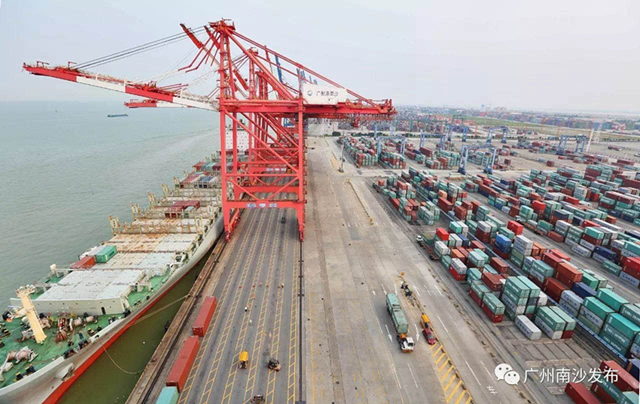Nansha Port pivotal in GBA freight transport system
The flow of import-export commodities is expected to become more efficient in the Guangdong-Hong Kong-Macao Greater Bay Area (GBA) with the launch of the regional port cluster project that aims to enhance integration within GBA ports.
Officially launched by Guangzhou Customs and Guangzhou Port Group on Nov 5, the project poises Nansha Port as the hub port, with inland Pearl River wharfs in Guangzhou, Foshan, Zhaoqing, Qingyuan, Yunfu, Shaoguan, and other places as feeder ports.
The regional port cluster boasts a paperless and systematic supervision mode relying on information technology. Exports and imports will complete "24/7" rapid customs clearance customs clearance procedures in inland ports, and be loaded onto ships upon arrival in Nansha.

Nansha Port. [Photo/gznsnews.com.cn]
"The project not only facilitates customs clearance, but also helps reduce the logistics costs of enterprises," said Zeng Qi, deputy director of the Guangzhou Customs Port Supervision Division. "With the support of information technology, import and export enterprises can more accurately grasp every links of cargo customs clearance, and arrange shipping schedules and spaces flexibly."
The first trial application of the new system was successful when a vessel loaded with eight containers of household appliances owned by Guangdong Chigo Air Conditioning Co Ltd completed customs clearance procedures in Nangang Port in Foshan's Nanhai district and left Nansha Port for overseas market on July 18.
It was then quickly promoted in six Pearl River inland wharves, including Jiaoxin in Guangzhou, Leliu, Beijiao, and Rongqi in Shunde, as well as Sanrong in Zhaoqing.
During the current promotion stage, 500,000 20-foot equivalent units (TEUs) will be imported and exported through this system per year, saving more than 5 million yuan ($754,000) in transportation costs. Guangzhou Customs officials stated that the program will be fully implemented in Guangzhou, Foshan, Zhaoqing, Qingyuan, Yunfu, Shaoguan, as well as other cities' ports within this year.
All rights reserved. Presented by China Daily









